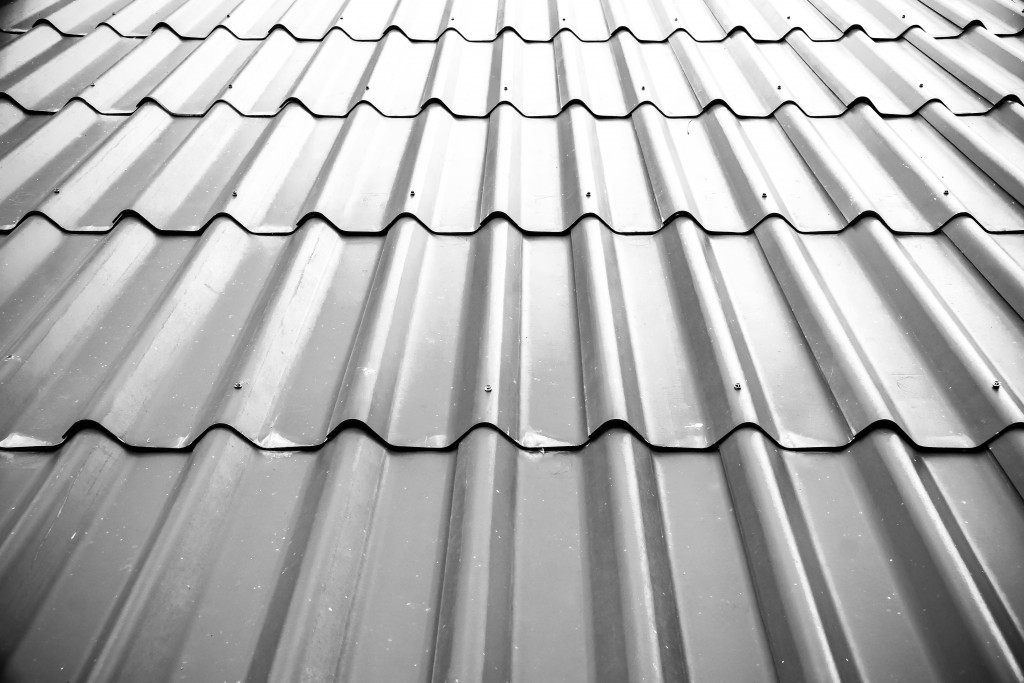- Add a roof coating to protect your roof from the elements and maximize weatherproofing capabilities.
- Repair any damages, treat cracks and holes, and replace worn-out items to maintain the structure of your roof.
- Check for loose nails and screws, cover exposed areas, and install metal flashing around skylights for extra protection.
- Applying a layer of sealant to all seams and edges will also help keep out moisture.
Keeping a roof in good condition is essential for protecting your home and family from the elements. Weatherproofing your roof is an integral part of maintaining it, as it can help to keep out moisture and improve insulation.
Although weatherproofing may seem like a daunting task, with some preparation and knowledge, you can easily do it yourself! This article will provide step-by-step instructions on weatherproofing your roof to ensure maximum protection against rain, snow, wind, and other external forces.
Add roof coating
Adding roof coating is one way to protect your roof from the elements. Hiring residential roof coating services is often a good idea as it will ensure that the job is done correctly, maximizing the weatherproofing capabilities of the coating.
Professionals typically use specialized products tailored to different roofs and climates, and they are familiar with essential details, such as dry times, substrate requirements, and proper application methods for achieving optimal results.
For example, silicone applications last longer in harsh environments, and acrylic products can withstand large quantities of dust or leaves. With professional residential roof coating services, you can be sure that your roof has been adequately weatherproofed and taken care of safely and sustainably.
Repair any damages
Treat cracks and holes.

Weatherproofing your roof is vital in protecting your home from the elements. The best way to do this is to repair any cracks or holes before they worsen properly. To start, you’ll need to clean the entire surface of the roof and then apply a quality sealant or caulk to fix holes and fill any small cracks.
For more significant cracks and holes, use a mastic patching compound and mesh fabric to ensure that it properly adheres. Be sure all materials used are explicitly designed for use on roofs, as improper materials can cause further damage down the line! Taking the extra time to complete these steps will help ensure that your roof stays in excellent condition for years to come.
Replace worn-out items
Weatherproofing your roof is a great way to extend its life, but materials like shingles and sealants may wear out and need replacing over time. It’s essential to take the necessary steps to properly replace these worn-out items so that your roof remains intact and secure.
Firstly, you’ll need to assess the damage–is it an accumulation of minor or significant issues? If it’s primarily small-scale, you can probably fix the areas with a sealant. Otherwise, for bigger jobs, such as installing new shingles or replacing large patches, you should consult a professional roofer who can properly get it back in shape.
Check for loose nails and screws.
Weatherproofing your roof is essential to ensure your home’s longevity. Checking for loose nails and screws may sound intimidating, but it involves a few easy steps. First, get a pair of binoculars or some other tool that allows you to have an up-close view from the ground.
Start from one end of the roof and look for any gaps between shingles where metal fasteners should be securing them down. If you spot imperfections, use a hammer or drill to ensure all nails or screws are tight. You might also want to check for any separated flashing that can allow water into your home’s structure. Don’t forget to look for cracked caulking around joints and edges; if this isn’t in proper order, replace it with rubber boot flashing tape as soon as possible.
Cover exposed areas
Depending on the materials used in the construction of your roof, there are several different steps that you can take to cover exposed areas adequately. Metal roofs should be checked for corrosion, and any damaged pieces should be replaced. Tar paper, asphalt roll roofing, or rubberized membrane can be placed over the metal to prevent leaking.
Wood shingle roofs are best protected with a strip of galvanized metal flashing applied along the edges where water might leak in. Synthetic materials such as PVC, TPO, and EPDM also need to be sealed along the edge seams with a sealant adhesive and may include flashing made out of aluminum or steel for protection against extreme weather conditions.
Install metal flashing around your skylights

Installing metal flashing around your skylights is an important part of weatherproofing your roof. Start by measuring the area where the flashing will sit and remove any debris or dirt that might be in the way. Cut the flashing piece to size with a snip, making sure all edges are straight, then apply heavy strips of adhesive, such as EPDM tape, to the back and bottom edges.
After that, lift the flange at one corner and press it into place on the roof around the skylight. Use a caulking gun to fill all exposed seams with caulk before securing them firmly onto the surface with nails. Finally, applying a layer of sealant will add an extra layer of protection and ensure no water can penetrate through gaps in the flashing material.
These are just a few of the steps you can take to weatherproof your roof and protect your home from the elements. With the right materials, tools, and knowledge, you can be sure that your roof will remain strong for years to come!







